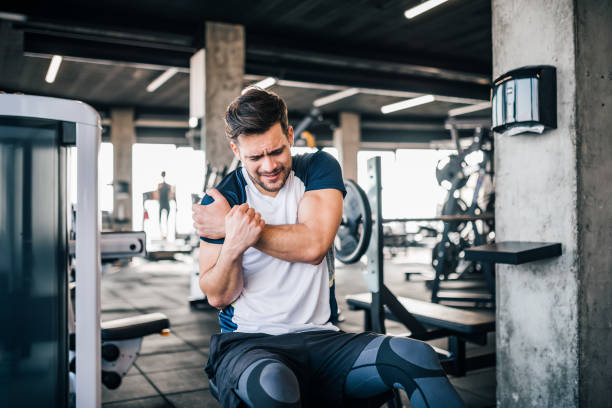Exercising keeps a person physically fit and at the same time, help with their mental and emotional well-being. However, one must take special precautions to avoid workout injuries especially if you’re passionate about fitness. It can get frustrating to have to wait until an injury is fully recovered before you can resume exercising.
Here are the most common injuries that you can encounter if you are physically active – whether you spend 1-2 hours a day at 9 Round, run a few times a week or are training for a particular sport.
1. Runner’s Knee
If you’re a runner, then your kneecap’s cartilage could be at risk of damage or inflammation, which account for 40% of running-related injuries. When the kneecap is out of alignment, it leads to wear and tear on its cartilage which in turn causes pain every time you sit, squat, or climb the stairs. The pain often worsens if not treated.
If you are suffering from runners knee, you should stop exercising/running if you don’t want the injury to get worse. Put an ice pack over the affected area for 20 minutes every 4 hours for at least a few days. You should also wrap the knee with an elastic bandage for support. If the pain is bothersome, you can take pain relievers like Motrin or Advil every 6 hours.
To prevent runner’s knee, be sure to stretch and warm up properly before you run. You should also start slow, don’t push yourself too hard especially if you’re a beginner or if you’re overweight as this can be hard on your knees.
2. Shin Splints
People who engage in running or any activity that involves jumping can suffer from pain affecting the shin area. Some may only have inflamed muscle in the shinbone area while others could have a stress fracture on the bone, causing a lot of pain every time you move your legs.
If you experience pain in your shin bone, see a doctor and ask for an X-ray to rule out fractures. You should also put ice over the shin, and take anti-inflammatory meds like Naproxen.
A sudden increase in the intensity of your workout as well as frequency are among the main causes of shin splints. New runners’ lower legs are still not strong enough so it’s important to stretch, warm up and not overdo your workout. It’s also recommended not to run everyday (at the start) to give your muscles time to recover.
3. Achilles Tendinitis
The large tendon found at the back of the heel can be inflamed. The reasons can either be poorly supported footwear, overtraining, and anything that could put a lot of stress on the heels. If you notice sharp pain and swelling in this particular area of your foot, you could be suffering from Achilles tendinitis. To treat it, focus on strengthening the lower legs by doing single leg squats, single leg dead lifts and other similar exercises. You could also ice the area for 15-20 minutes 4-6 times a day and do some self massage to relieve the pain.
4. Iliotibial Band Syndrome
This injury is caused by overuse of the thigh, shin and hip causing the leg to be inflamed. This is a common injury among cyclists often due to incorrect cycling position. You’ll experience pain when you straighten the knee or bend your leg. Complete body rest is needed and icing also helps alleviate the pain. To avoid the Iliotibial Band Syndrome you have to make sure the saddle height of your bike is correct and to give your body ample time to rest and recover in between workouts.
5. Carpal Tunnel Syndrome
This injury is a result of putting constant pressure on the median nerve in activities like the plank pose, push ups and any exercise that require the wrists to be bent backward or forward decreasing the space in the carpal tunnel and causing the surrounding membranes to swell.
To treat carpal tunnel syndrome, you should avoid activities that require the use of your wrists and you may also need to take anti-inflammatory medications or injections. As a preventive measure, always switch positions and hands when doing repeated movements and as much as possible, avoid excessive wrist-bending.
6. Muscle Spasms
When you overstretch your muscles, it can lead to tearing or inflammation. Muscle spasms is sometimes a result of muscle dehydration, overuse, electrolyte imbalance or prolonged use of the same muscle/muscle group. It is often characterized by acute onset of pain and tightness. It usually resolves in a few hours or days with rest and gentle stretching. You may also need to take painkillers if the pain is worse. Preventive measures include proper hydration before the workout and doing proper warmups.
